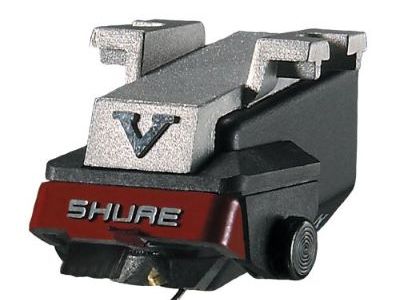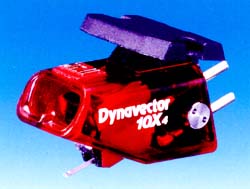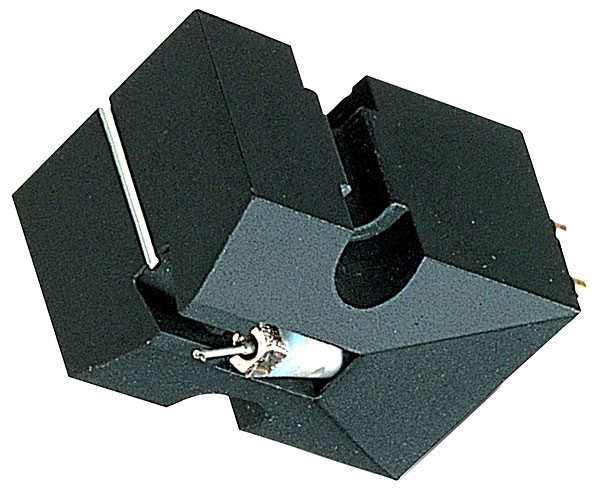There have been few items in hi-fi that have lasted as long as the Shure V15. It was the American company’s main pickup cartridge from 1964 to 2005, and it went through eight different iterations. It cultivated a devoted following; for others, it was the only method to listen to LP music. The V15 had a particular sound that could only have come from a Shure, and despite its flaws, it was unfailingly enjoyable to listen to. Its pulsing, powerful, dynamic sound makes it just as entertaining now, and the design’s flaws were largely sorted out as the design progressed, but its appeal remained.
The first V15 was released in 1964. The ‘V15 Stereo Dynetic High Fidelity Phonograph Cartridge’ had a 15 degree vertical tracking angle and a symmetrical bi-radial elliptical stylus measuring 0.00020.0009in. Shure claimed that it was subjected to “unique in the industry” quality control and inspection processes. It undoubtedly added to the status of a company that was already well-known for producing microphones and more cheap pickups, and it lasted for two years until the V15 Type II was released in 1966. This was billed as the first ‘computer-designed improved tracking cartridge,’ and it was with it that Shure coined the phrase ‘trackability,’ which refers to the ability to maintain contact between the stylus and the record groove with minimal tracking force throughout the audio spectrum. It also included a built-in stylus guard with a flip-action. In 1970, the V15 Type II Improved was released, which included an improved stylus and a smoother frequency response.
In 1973, the V15 Type III was introduced to the market, and it was already gaining critical acclaim. It happened to fall in line with the shift to high-compliance cartridges, which the Type III exemplified. It had a new laminated pole piece and a “uniformly flat, unaccented, uncolored frequency response,” according to Shure, as well as a 25% reduction in effective stylus mass. From 1978 through 1982, the V15 Type IV was the high watermark of high compliance, high traceability cartridges. It had a viscous-damped Dynamic Stabilizer to damp the cantilever over record warps and electrostatically neutralize record surface noise, as well as a hyperelliptical nude stylus tip with an optimized tip-groove contact area. This was contentious, and Shure admitted that for the optimum sound, ‘the brush,’ as it was dubbed, should be returned to its rest position, where it was virtually deactivated.
As low compliance moving coils from companies like Supex, Audio Technica, and Linn became more popular in the early 1980s, the idea of an expensive, high compliance moving magnet began to fade from favor. Still, from 1982 to 1983, the V15 soldiered on with the Type V, which included a MASAR-polished tip and an ultra-thin-wall beryllium (Microwall/Be) stylus shank to reduce friction. To reduce lateral tracking angle inaccuracy, it came with a Duo-Point Alignment gauge. This was improved by two more versions: the 1983 Type V-MR, which featured a Micro-Ridge stylus tip for increased trackability, and the V15 Type VxMR, which was available from 1996 to 2005 and had a different pole piece location.
Different pole sections were used in each iteration of the V15, as was the stylus housing. This means that the stylus cannot be passed down through generations. However, different styli can be used within generations; for example, a series VxMR stylus (1996) can fit the original 1982 version. Indeed, many of the V15’s later incarnations revolve around stylus profile changes; the Micro-Ridge (MR) diamond debuted on the V15 Type V, and it was a significant advancement, so much so that Shure went back and offered the Micro-Ridge diamond on replacement styli for the V15 Type III and Type IV as well. Long-term quantities were estimated and manufactured once more. In this case, the tooling for the V15 Type V allowed for the fabrication of extra Type III replacement styli. Shure stopped making new styli for the V15 in 2005, but Ed Saunders has been remanufacturing them since then at extremely low costs.
Despite the rise of moving coil cartridges, the final Shure V15VxMR, released in 1996, received numerous accolades and became the standard cartridge for Sony Music’s preservation operations. Its 6.6gm body features a die-cast aluminium mounting block, Shure’s Dynamic Stabilizer damper, an extremely low mass Beryllium tubed cantilever, and a Micro-Ridge (hence MR) stylus that claims to track best at 1gm and sells for £400 in the UK. Even though the unconventionally shaped stylus assembly provides relatively few reference points for alignment, it’s a reasonably regular size and not too difficult to mount at 15.87mm high. The elegant claret red velvet box came stuffed with extras like an alignment protractor, turntable wedges, screwdriver, stylus cleaning brush, user and installation directions, mounting hardware, and a fantastic stylus guard that made installation a breeze.
I was enthralled the first time I heard it. It’s tonally smoother and warmer than I’d expected from Shures of old, but it’s also hyper fast and acute – which is the important point, because almost all cartridges are either warm or fast, but rarely both. The midband is detailed and open, with notably excellent depth perception and picture articulation, while the treble is robust and brassy without being harsh. Bass was supple and resonant. It’s the rhythmic zip that takes you by surprise; it makes many moving coils seem tame. Attack transients are dizzyingly quick, and it imbues anything it plays with a sense of urgency akin to a Naim NAP250 power amplifier. It’s one of the most distinctive cartridges available. It isn’t perfect, though, as it lacks the ‘hear through’ clarity found in good mid-priced moving coils.
The V15 was known for its trackability; succeeding iterations were believed to be the most tenacious groove-riders on the market at the time. Another significant difficulty was tracking force; in the mid-1970s, 0.75g V15s were commonly utilized. The xMR performs best at just over 1g, which is still quite low by moving coil standards. Under tough playing conditions, the Dynamic Stabilizer strives to maintain a consistent distance between the cartridge and the record, although it should only be used on warped records. It can be locked into its detent position while not in use. It is not one of the loudest moving magnets on the market at 3.0mV output, but it does not require an additional MC step-up amplifier or transformer, which is a significant sound, economic, and practical benefit. Shure cartridges are quite sensitive to capacitive loading; for the V15V, 47k ohms in parallel with 250pf is recommended.
The V15 maintains a devoted following to this day, despite the fact that it is far from cutting-edge in terms of technology. For example, a new £900 Lyra Delos moving coil will provide far more detail, timbral accuracy, and refinement, and sound virtually as much fun. But that’s missing the point; the V15 is a loud-and-proud moving magnet, content to serve you a wonderfully warm, punchy, and musical sound regardless of whether it’s the last word in accuracy or not. Cartridges are really personal, and I can see why so many people still adore the Shure V15.







